Songwon (송원)
4.7Km 2020-02-11
35-4, Dongho-ro 24-gil, Jung-gu, Seoul
+82-2-2275-3118
Songwon is well known in the Jangchung-dong area for serving only high-quality Korean beef, seasoned with 20 different types of natural ingredients.
Wonjo 1ho Jangchungdong Halmeonijip(원조1호장충동할머니집)
4.7Km 2020-11-17
174, Jangchungdan-ro, Jung-gu, Seoul
+82-2-2279-9979, +82-2-2275-1064
Following his mother’s footsteps, the son of the previous owner is now managing the family business. Opened during the early years of Jokbal Street, the delicious meat at this restaurant is fondly remembered by customers. While the meat itself has almost no fat, the fat portion is extremely soft and savory. This restaurant is also different from the others in that it provides kongnamul-guk (bean sprout soup) with the jokbal (steamed pork hock). Pyeongyang-style naengmyeon (cold noodles) and tteok-mandu-guk (rice cake-dumpling soup) are also delicious. Pyeongyang naengmyeon is cooked to suit South Korean tastebuds. Besides, the noodles and dumplings are hand-made. Despite the restaurants long history, the building of the restaurant is clean and well-maintained as it was being rebuilt after a fire in the 1980s. There are plenty of tables on the first and second floors to accommodate customers, and the third floor is reserved for large groups. Especially noticeable is the clean appearance both inside and out, despite the restaurant’s long history; probably because the building was rebuilt after a fire in the 1980s. Plenty of tables on the first and second floors accommodate customers, and the third floor is reserved for large groups.
Dalkanmari Dwaejihangeun (닭한마리돼지한근)
4.7Km 2021-03-18
33, Dongho-ro, 24-gil, Jung-gu, Seoul
+82-2-2285-5988
A restaurant recommended by members of the Jangchung-dong Cooperative of Shopkeepers. The representative menu is spicy braised chicken. This Korean cuisine is located near Dongguk Univ. Station, Seoul.
Agurang Kkotgerang (아구랑꽃게랑)
4.7Km 2021-03-18
35-5, Dongho-ro, 24-gil, Jung-gu, Seoul
+82-2-2263-5554
This Korean cuisine is located near Dongguk Univ. Station, Seoul. The representative menu is soy sauce marinated crab. The favorite restaurant of Japanese tourists.
Crap Hoe Fish - Jangchungdong Branch (크랩회피쉬 장충동)
4.7Km 2021-03-19
27-4, Dongho-ro24-gil, Jung-gu, Seoul
+82-2-2269-9968
A restaurant where live seafood is prepared and served fast. The representative menu is sliced raw fish. This Korean cuisine is located near Dongguk Univ. Station, Seoul.
Palais Changdeokgung et son jardin Huwon (Jardin secret) [Patrimoine Mondial de l'UNESCO] (창덕궁과 후원)
4.7Km 2020-04-16
99, Yulgok-ro, Jongno-gu, Seoul-si
+82-2-3668-2300
Le Palais Changdeokgung est la seconde demeure royale construite après le Palais Gyeongbokgung en 1405. Changdeokgung fut le palais principal de nombreux rois pendant Joseon, et est le mieux préservé parmi les cinq palais de Joseon encore debout. Le jardin à l’arrière, autrefois lieu de détente des rois, peut se vanter d’avoir en son sein un gigantesque arbre de plus de 300 ans, un petit étang et un pavillon. Les terres du palais sont composées d’une zone publique, d’une résidence pour la famille royale ainsi que ce jardin. Le palais servit de bâtiment principal après le règne du Roi Seongjong (9ème roi de Joseon), alors que de nombreux rois l’utilisèrent comme maison d’habitation. Toutefois, il fut incendié durant l’invasion japonaise en 1592. Grâce à Gwanghaegun, le palais fut restauré en 1611 et la nature et l’art y abondent désormais, faisant de lui un endroit incontournable pour les touristes. Il est rempli de biens culturels à visiter tels que les Pavillons Injeongjeon, Daejojeon et Seonjeongjeon ainsi que Nakseonjae. En Décembre1997, le Palais Changdeokgung fut désigné Patrimoine Mondial de l’Humanité par Le Comité du Patrimoine Mondial de l’UNESCO à Naples en Italie. La jardin de Changdeokgung fut construit durant le règne de Taejong et servit d’aire de repos pour les membres de la famille royale. Il fut aussi appelé Bukwon et Geumwon, mais après le sacre de Kojong, il fut renommé Biwon. Le jardin fut préservé dans son état brut autant que possible et l’on a utilisé la main de l’homme lorsque c’en était absolument nécessaire. Buyongjeong, Buyongji, Juhabru, Eosumun, Yeonghwadang, Bullomun, Aeryeonjeong et Yeongyeongdang sont quelques pavillons et fontaines situés dans ce jardin. La meilleure des saisons en ce qui concerne les visites est sans conteste l’automne, lorsque les feuillages sont à leur apogée et que les feuilles commencent à tomber. Il s’agit d’un des endroits que les « Premières Dames du G20 de Séoul » ont visité durant l’évènement en Novembre 2010. Cette destination représente la beauté de la Corée.
Le palais Changdeokgung et son jardin Huwon (창덕궁과 후원 [유네스코 세계문화유산])
4.7Km 2025-07-25
Seoul, Jongno-gu, Yulgok-ro 99
+82-2-3668-2300
Le palais Changdeokgung est le deuxième palais royal construit durant la dynastie Joseon après le palais Gyeongbukgung (1405). Il s'agissait du palais de résidence principal pour beaucoup de rois durant l'ère Joseon, il est considéré comme le palais le mieux préservé des cinq palais royaux. Le site est constitué d'une place publique, d'un bâtiment pour la famille royale et d'un jardin. Connu comme un palais de repos pour les rois de la période, le jardin du palais abrite notamment un arbre géant de plus de 300 ans, un petit étang et un pavillon.
Le palais a été brûlé par des citoyens en colère en 1592 lors de la période d'invasion de la Corée par le Japon. Avec l'intervention de Gwanghaegun, le palais fut restauré en 1611. Encore aujourd'hui, le palais abrite nombre de trésors culturels importants comme le hall Injeongjeon, le hall Daejojeon, le hall Seonjeongjeon, et Nakseonjae.
Le jardin 'Huwon' du palais a été construit durant le règne du roi Taejong et servait de lieu de repos pour les membres de la famille royale. Le jardin n'a été que très peu modifié depuis sa création. La meilleure période pour apprécier le jardin est l'automne (fin septembre, début octobre), le site permet en effet d'admirer de très beaux feuillages d'automne.
Le palais Changdeokgung a été classé au patrimoine culturel de l'Unesco en décembre 1997 (comité de Naples).
Le palais a notamment été sélectionné comme lieu de visite pour les épouses de président durant le sommet Seoul G20 (novembre 2010).
Jongmyodaeje (Rite ancestral royal de Joseon) (종묘대제)
4.7Km 2022-04-01
Jongmyo, Jongno-gu, Seoul
+82-2-2270-1242
Jongmyodaeje, organisé par l'Administration de l'héritage culturel
et la Fondation de l'héritage culturel coréen et dirigé
par la Comité d'accomplissement de Jongmyodaeje se tient tous les ans
au mois de mai. En tant que 56ème trésor culturel et intangible
classé, Jongmyodaeje a lieu à Jongmyo, patrimoine culturel du
monde. Il s'agit d'une occasion rare de voir le trésor culturel tangible
et le trésor culturel intangible s'unir en même temps. Le jour
du rite, vous pouvez le voir gratuitement et sans réservation à
l'avance.
Jongmyo Daeje vit le jour en tant que rîtuel royal anecestral
afin d’honorer les rois et reines de la Dynastie Joseon. Durant cette période
de Joseon, le rituel eut lieu cinq fois dans l’année (au printemps,
en été, en automne, en hiver et en décembre) avant d’être
aboli par une loi pendant la colonisation japonaise. En 1969, Jongmyo Daeje
fut rétabli et se tient depuis tous les mois de mai.
Sanctuaire Jongmyo [Patrimoine mondial de l'UNESCO] (종묘)
4.7Km 2023-08-30
157, Jong-ro, Jongno-gu, Seoul-si
+82-2-765-0195
Le sanctuaire royal de Jongmyo est l’endroit de vénération des rois de la dynastie Joseon. Il a été construit lorsque le premier roi de la dynastie Joseon, Lee Seong-Gye (1335-1408) a fondé cette fameuse dynastie.
Le sanctuaire royal de Jongmyo est inscrit au patrimoine culturel mondial de l'Unesco grâce à ses traditions et ses coutumes tels que les services funéraires et la musique traditionnelle qui y sont très bien conservés.
Vous trouverez un chemin qui bifurque en trois routes en face de la porte principale du sanctuaire royal de Jongmyo. Le passage de la route du milieu qui est légèrement surélevé était autrefois réservé pour les défunts et leurs esprits, la porte de l’est pour le roi et la porte ouest pour le prince. Le passage du milieu est relié à Jeongjeon, et les routes de chaque côté sont connectées quant à elles à la salle de préparation du service mémorial. Après avoir préparé avec beaucoup de soin son esprit et son corps, le roi et le prince se rendaient régulièrement à Jeonsacheong. Jeonsacheong est le lieu où étaient préparés les aliments pour la cérémonie funéraire. Avec la cour au centre, les bâtiments de Jeonsacheong sont de forme carrés. Le bâtiment principal, Jeongjeon, est le lieu où les tablettes mortuaires des rois étaient gardées et où étaient tenus les services funéraires.
Ce lieu a ainsi su préserver ses traditions jusqu'à aujourd'huin, malgré le fait que les reliques des rois successifs aient été originellement passées en Chine. Jeongjeon est constitué de 19 chambres où chacune d’elle sert à la vénération des rois.
La musique des services funéraires du sanctuaire royal de Jongmyo est crée par des instruments, des chants et des danses créés il y a plus de 500 ans. La mélodie a été transmise telle qu’elle depuis toute cette période. Cette cérémonie est la cérémonie complète et traditionnelle la plus vieille du monde et se tient tout les premiers dimanches du mois de mai, et ce chaque année. C’est une grande opportunité pour les visiteurs d'apprécier la grandeur d’une telle cérémonie traditionnelle. Le sanctuaire accueille de nombreux événéments durant le mois de mai, ce qui en fait la meilleure période pour le visiter.
Promenade au clair de lune au palais Changdeokgung (창덕궁 달빛기행)
4.7Km 2023-08-02
99, Yulgok-ro, Jongno-gu, Seoul
• Centre d'appels 1330 : +82-2-1330 (coréen, anglais, japonais, chinois) • Pour obtenir plus d'info : +82-2-2270-1233 / 1238
Nous vous invitons à la Promenade au clair de lune au palais
Changdeokgung qui a lieu tous les ans d'avril à octobre.
Ce programme vous permet d'en apprendre plus sur l'histoire ancienne de la Corée ainsi que la
culture traditionnelle du pays.
Ce programme de visite nocturne vous permet également de profiter de concerts traditionnels tout en dégustant des petits encas typiques de Corée.
Construit à l’origine pour servir de villa royale, le palais
Changdeokgung est devenu le centre du gouvernement durant la dynastie Joseon après que le palais principal
Gyeongbokgung ait été brûlé durant l’invation japonaise au XVIème siècle. En plus de son importance politique, le palais est renommé pour son esthétique et son architecture, étant aménagé au sein d’un magnifique paysage naturel. En 1997, l’UNESCO a inscrit le palais Changdeokgung sur la liste du patrimoine culturel.
Dans le cadre du projet Création des Palais Vivants, le circuit au clair de lune du palais Changdeokgung offre une occasion unique de contempler et faire l’expérience de la beauté du palais.
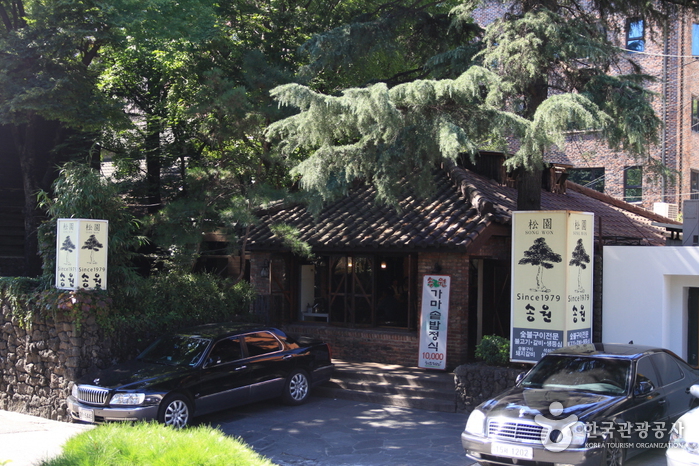
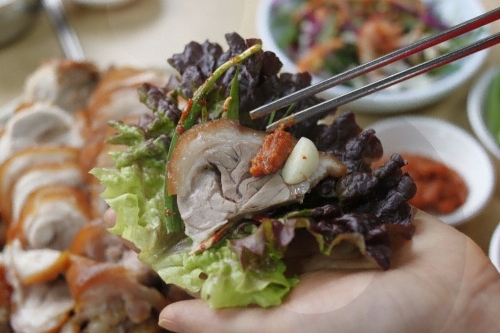
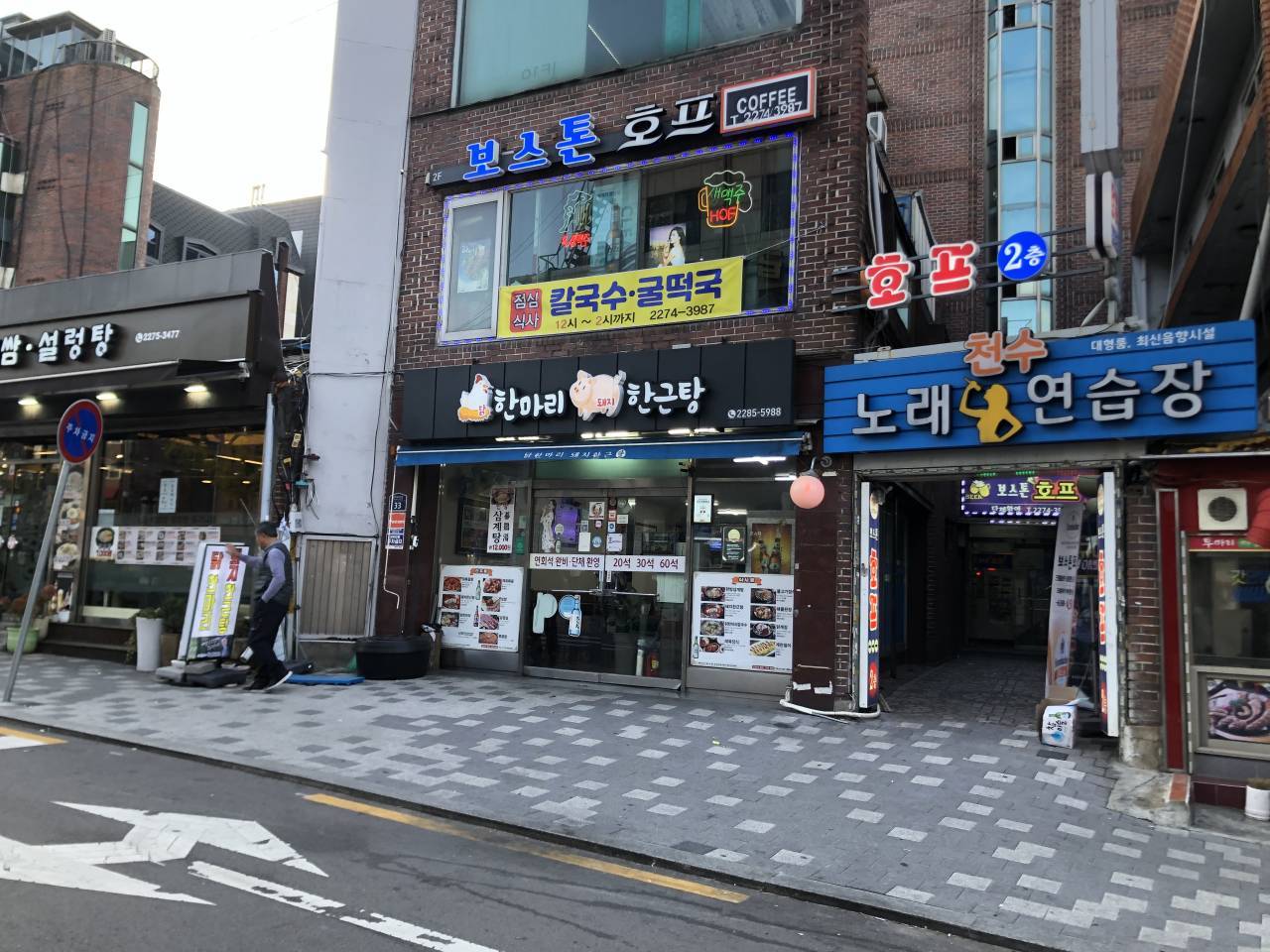
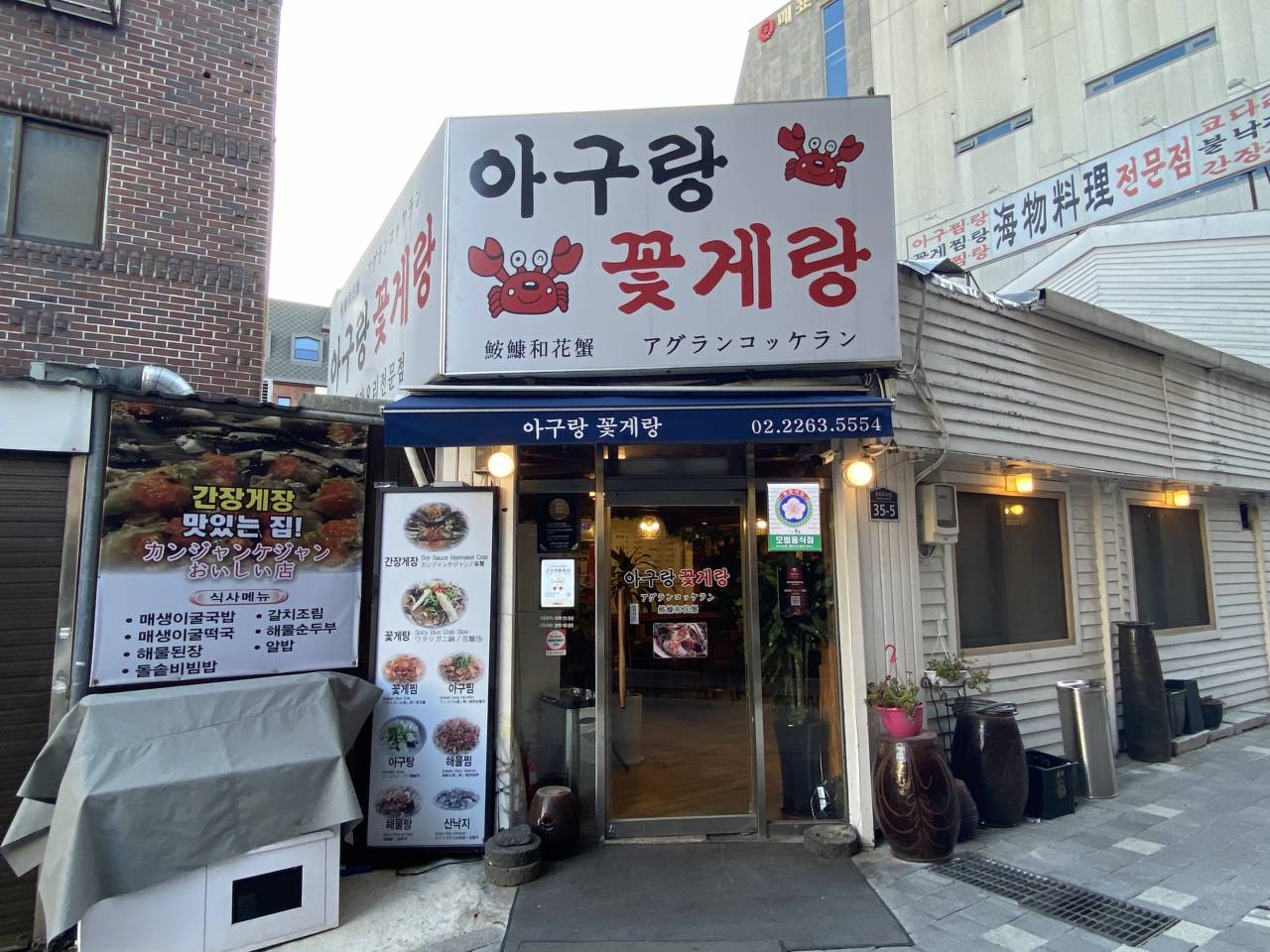
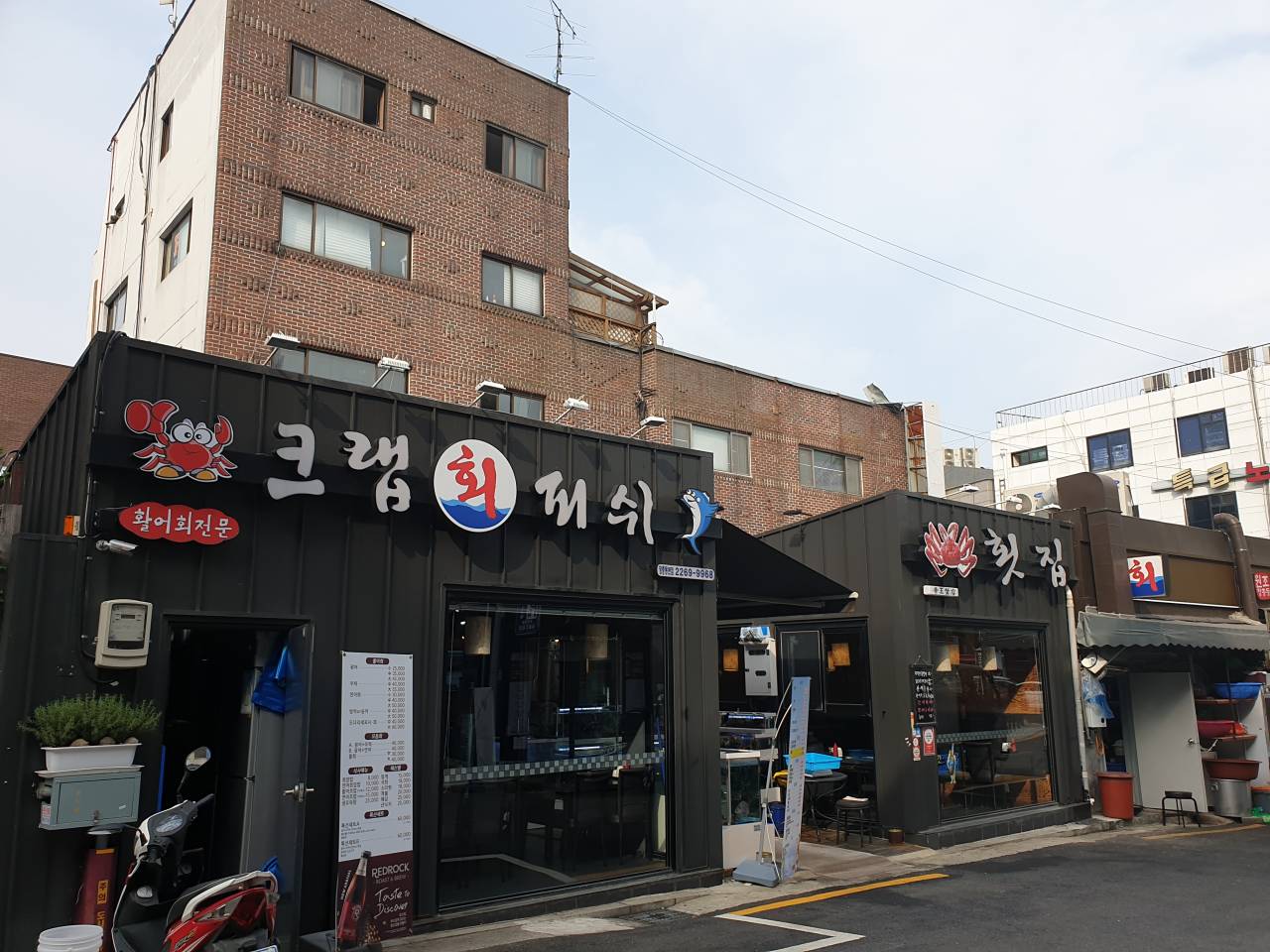
![Palais Changdeokgung et son jardin Huwon (Jardin secret) [Patrimoine Mondial de l'UNESCO] (창덕궁과 후원)](http://tong.visitkorea.or.kr/cms/resource/31/654531_image2_1.jpg)
![Le palais Changdeokgung et son jardin Huwon (창덕궁과 후원 [유네스코 세계문화유산])](http://tong.visitkorea.or.kr/cms/resource/50/2678650_image2_1.jpg)

![Sanctuaire Jongmyo [Patrimoine mondial de l'UNESCO] (종묘)](http://tong.visitkorea.or.kr/cms/resource/41/2678541_image2_1.jpg)
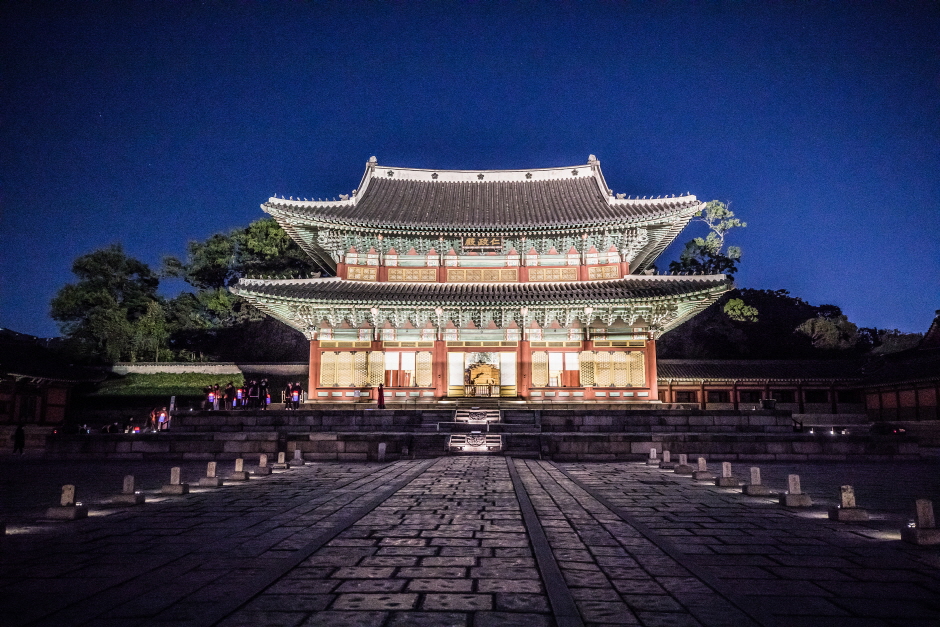
 Français
Français
 한국어
한국어 English
English 日本語
日本語 中文(简体)
中文(简体) Deutsch
Deutsch Español
Español Русский
Русский